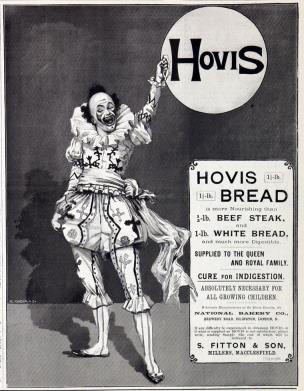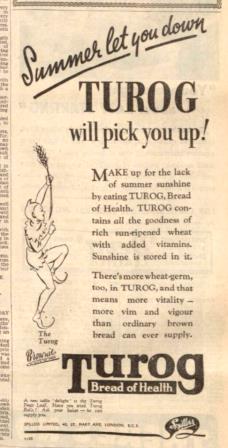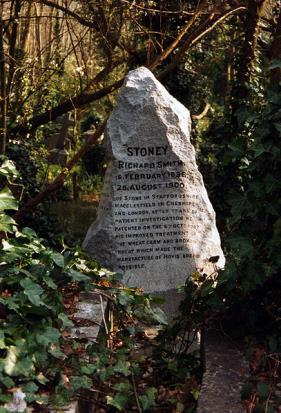

|
 Bread, usually wholemeal, but occasionally white, made with the addition of extra wheatgerm.  Hovis, c1895 Image via: www.gracesguide.co.uk A series of discoveries towards the end of the 19th century seemed to point to the importance of tiny amounts of certain nutrients, and to the little embryo or ‘germ’ inside a seed as a particular source of them. We now know these ‘accessory factors’ as ‘vitamins’, and wheatgerm as a source of Vitamins E and B, and essential folic acid, phosphorus, thiamin, zinc and magnesium. Richard ‘Stoney’ Smith was born in the mill house at Stone in Staffordshire in 1836. He developed the process of extracting the wheatgerm, normally discarded with the bran when making white flour, steaming it, then adding it in to wholemeal flour to produce a bread with about three times its natural germ, but without the grittiness associated with other wholemeal breads. He teamed up with the Macclesfield millers, Fitton & Sons Ltd, and, after a £25 prize competition for a better name ‘Smith’s Patent Germ Flour’ became ‘HoVIS’, from the Latin ‘hominis vis’ – “the strength of man”. In 1898, with Hovis selling the flour to local bakers to make more than a million loaves a week, Fittons changed their name to ‘The Hovis Bread Flour Company’.  Western Gazette – Friday 23 October 1936 The ‘Hovis’ brand was not without competitors, including Vit-Be and Turog, so that its makers took considerable trouble to protect it. The Hovis name has been registered for use on, among other things; volcanic ash for cleaning purposes, sanitary towels, underwear, anti-rheumatism rings, tweezers, screwdrivers, garden rakes, money scoops, nut crackers, lightning conductors, gramophone motor springs, blow lamps, ballcocks, bicycle saddles, ariel ropeways, shoe liners, paving stones, cigarettes, birdcages, waterbeds, manure, bridges and spitoons. Stoney Smith is buried in Highgate Cemetery, North London (not far from Karl Marx) beneath an extraordinary rock monument outlining the origins of Hovis.  Grave of Richard ‘Stoney’ Smith in Highgate Cemetery.  |
|
MORE FROM Foods of England... Cookbooks ● Diary ● Index ● Magic Menu ● Random ● Really English? ● Timeline ● Donate ● Royalty ● English Service ● Food Map of England ● Lost Foods ● Accompaniments ● Biscuits ● Breads ● Cakes and Scones ● Cheeses ● Classic Meals ● Curry Dishes ● Dairy ● Drinks ● Egg Dishes ● Fish ● Fruit ● Fruits & Vegetables ● Game & Offal ● Meat & Meat Dishes ● Pastries and Pies ● Pot Meals ● Poultry ● Preserves & Jams ● Puddings & Sweets ● Sauces and Spicery ● Sausages ● Scones ● Soups ● Sweets and Toffee ● About ... ● Bookshop ● Email: [email protected] COPYRIGHT and ALL RIGHTS RESERVED: © Glyn Hughes 2022 BUILT WITH WHIMBERRY |